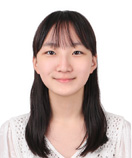![[Image of Doctor.Photo Credit to Pixabay]](https://cdn.heraldinsight.co.kr/news/photo/202402/3880_7682_1222.jpg)
The government and the Korea Medical Association are once again in conflict over the government's announcement to expand the number of medical school students in South Korea.
On February 1st, as predicted, the government revealed a plan to increase the number of medical students by up to 2000, leading to protests from the Korea Medical Association.
The Association warned the government to stop pushing ahead with the policy based on a survey conducted on 55 hospitals nationwide.
The survey revealed that 86 percent of 4200 doctors are willing to take action if the government insists on increasing the number of medical school students.
The Korea Medical Association played a critical role in beating the Moon Jae-In government’s attempt to increase the number of medical school students in 2020.
The limit on medical school students has been maintained for the past nineteen years since a reduction in 2000 resulting from separation of prescribing and dispensing pharmaceuticals.
In 2020, the Moon Jae-In government announced a plan to increase the number of medical school students by 4000 over the next 10 years, with an annual increase of 400.
However, due to a sit-down protest by doctors in university hospitals, with a participation rate reaching nearly 80 percent, the government suspended the policy.
The Korea Medical Association opposes the increase in the limit of medical school students, claiming that there is no shortage of doctors considering the trend of population decline and the doctor growth rate.
They also argue that increasing the number of medical students is urgent as the ratio of doctors per 1000 people is at 70 percent of the OECD average, indicating a shortage of doctors.
The public also supports expanding the number of medical school students, with over 70 percent of respondents favoring the increase.
A poll released by the Korean Health and Medical Workers' Union in December 2023 found that 89.3 percent of the respondents support expanding the number of medical school students.
On January 31, the Ministry of Health and Welfare and the Korea Medical Association held a conference to discuss medical issues regarding the increase in the medical school quota.
The head of the Gwangju Medical Association criticized the government’s claim, stating, ‘Since last year, a two-way major application has been presented for essential medical subjects, but the applicants are still lacking. Nothing changed, even though the government was confident about the inflow to the essential medical sector through various policies.’
He added that the Ministry of Health and Welfare has been receiving two choices for essential medical subjects since 2023, but it has been confirmed that many hospitals do not have applicants for them.
A lawmaker in the Democratic party, Shin Hyun Yong, revealed that the number of doctors majoring in essential medical subjects has decreased by 24 percent over a decade, with a notable decrease in pediatricians and surgeons.
Among them, the number of pediatricians decreased by 536, and the number of surgeons decreased by 176.
The head of the Korea Medical Association also commented on potential side effects of expanding the quota of medical schools in the national entrance exam for universities.
He asserted that due to the government’s policy, the number of exam repeaters is expected to peak this year.
To address this issue, prioritizing ways to attract doctors to essential medical fields is crucial.
Both the government and the Korea Medical Association should collaborate and communicate to find the best solution considering the welfare of the people.

Jenny Ahn
Grade 11
Chadwick International School

